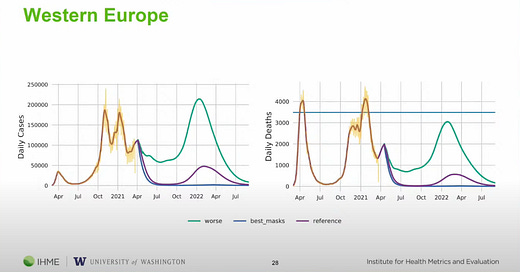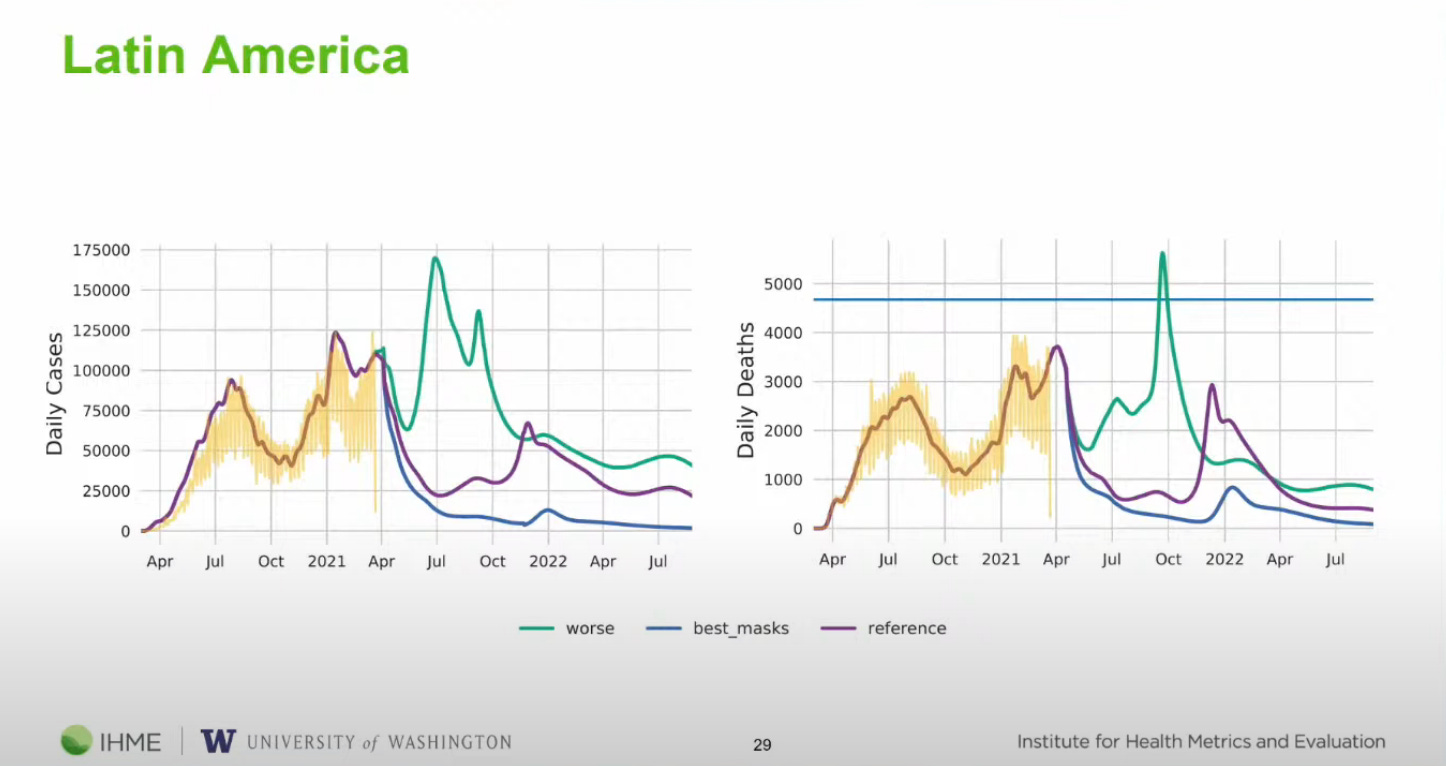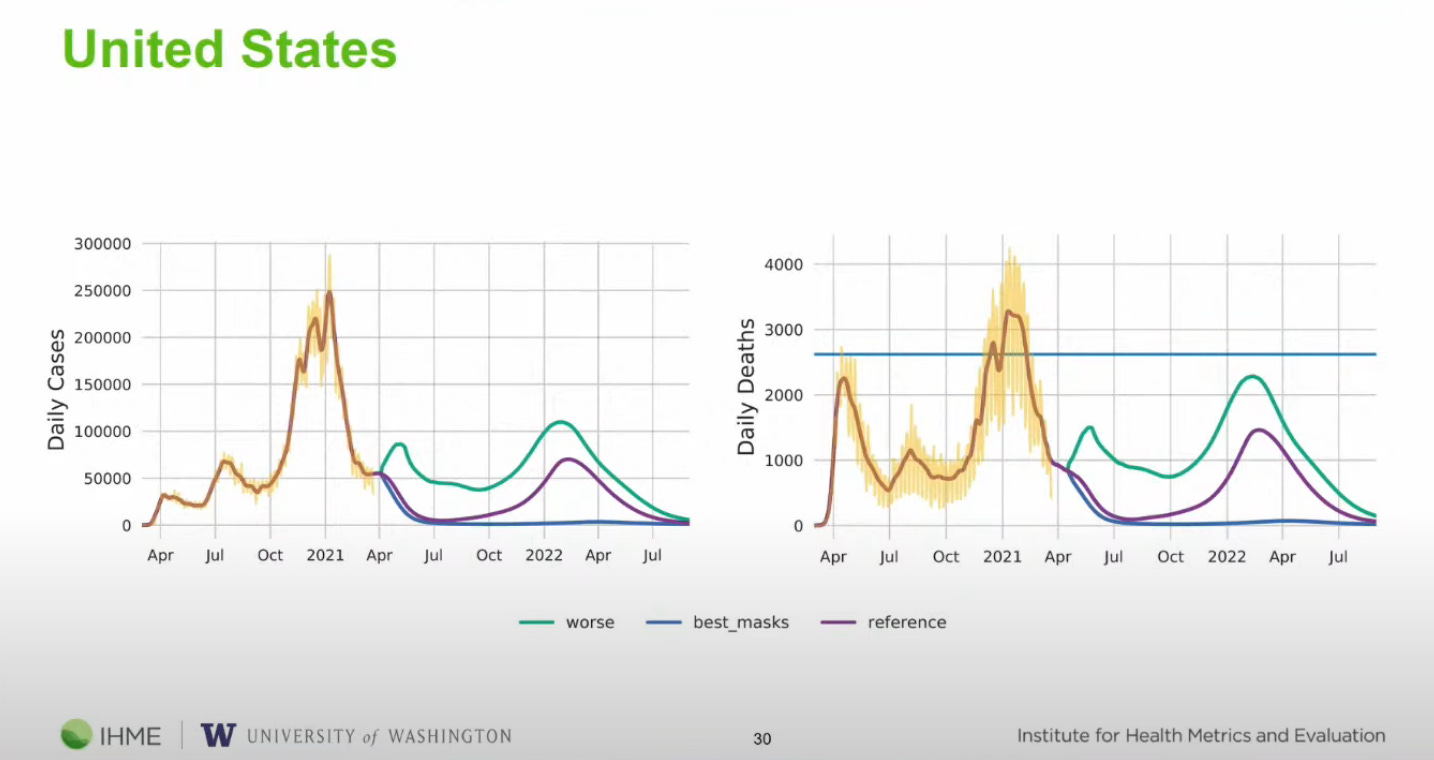Welcome to Plugging the Gap (my email newsletter about Covid-19 and its economics). In case you don’t know me, I’m an economist and professor at the University of Toronto. I have written lots of books including, most recently, on Covid-19. You can follow me on Twitter (@joshgans) or subscribe to this email newsletter here. (I am also part of the CDL Rapid Screening Consortium. The views expressed here are my own and should not be taken as representing organisations I work for.)
The one thing I haven’t been positioning this newsletter is as “a happy place.” But, due warning, today’s post takes downer to a whole other level.
Today, I want to talk about Fall 2021 and Winter 2022. Wait! You may ask: why? Isn’t that “post-pandemic”? Aren’t we all done by then? There is a small chance of that but it seems that is not the epidemiological consensus at all and the smart money is that the worst may be ahead of us.
The long-run forecasts are, sadly, not being published as reports but they are being presented at conferences. Here I am going to focus on the work of the University of Washington’s, Christopher Murray. (You can watch his presentation here). These are the most sophisticated models that take into account vaccine supply forecasts and vaccine hesitancy predictions.
Let’s start with Western Europe:
What we are looking at there is a massive outbreak in the Winter (just compare it with now, April, at the beginning of this graph). Now if we continue current measures or improve mask-wearing, this is kept at bay but the green line is what happens if we relax. The main drives are a lack of vaccinations (caused by hesitancy) and the new variants.
Here’s Latin America:
It’s even worse. Again, new variants and lack of vaccinations.
And here’s the US:
Things are better there but look at the likely deaths. The problem is that in the US, precisely because it has more vaccination, the likelihood that protective measures will be in place in the Fall are much lower than elsewhere. And so you get this surge in deaths almost as bad as it has been. In other words, the real health cost of the pandemic will not be over in the Summer of 2021. They continue on.
Finally, this is the world picture:
None of this is a prediction of an end. Indeed, it is a prediction that we are not yet halfway done.
Even these predictions are somewhat, ahem, optimistic. They are based on current information on variants but there is lots we don’t know about them. For instance, we don’t know if the Brazillian variant (P1) will be a summer variant throughout the northern hemisphere. We don’t know how much reinfection might occur post-vaccination — they are not 100% perfect. And we don’t know the pattern of waning immunity that might arise and literally hit us all in the Winter of 2022.
I have no answers here. This is just to present what I understand to be the facts. These epidemiological models have got very accurate in their predictive power of the past year as more has been understood. They have also got much better in terms of taking into account behaviour although that is an imperfect exercise.
Of course, I think we need more regular screening to keep the numbers low, stop breeding grounds for variants and to make sure we can get enough people vaccinated to keep prevalence low. But we are tired which is, of course, baked into those predictions.







